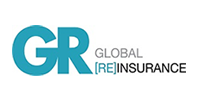Half of insurers still not licensing catastrophe models despite record nat cat losses, according to a survey by the re/insurance broker
The catastrophe models at the core of many re/insurers’ risk management strategies are still not being fully adopted or evaluated by a large segment of the market, according to Aon’s “2025 Catastrophe Risk Management Survey”, published on 8 August.

The report, which draws on input from senior industry leaders, revealed some 48% of insurers still do not license catastrophe models, while only 27% have in-house teams dedicated to evaluating the models they use.
This comes despite what Aon described as a challenging global risk environment, with total insurance claims from natural disasters in the first half of 2025 standing as the second highest on record, according to the firm’s earlier “1H 2025 Global Catastrophe Recap”.
The survey identified three key themes around the evolving use of catastrophe models: the growing strategic role of analytics, increased confidence in science-backed models, and a highly regionalised approach to implementation.
More than four in five respondents said analytics were central to their risk management and reinsurance strategies. Yet nearly 60% reported working with catastrophe risk teams of five people or fewer, often leaning heavily on their brokers for model evaluation, portfolio oversight, and rapid response post-event.
“Re/insurers are increasingly relying on broker expertise to help navigate the complexity of catastrophe risk modelling,” said the report. “This partnership is essential given resource constraints and the rapidly changing risk landscape.”
Aon found widespread confidence in models built on scientific and engineering rigour, with over 70% citing these as important for underwriting, capital management and reinsurance decision-making.
However, Katie Carter, head of view of risk advisory for Aon in the Americas, warned that the value of these models hinges on how they are applied.
“In an increasingly complex and volatile global risk environment, our survey highlights the importance of re/insurers implementing a multi-model, risk-level catastrophe management strategy that incorporates the latest climate science,” Carter said.
“It also reveals that risk management strategies vary regionally and must be considered when identifying appropriate risk transfer mechanisms to optimise utilisation of capital,” she added. “Taking such steps can lead to better business decisions, and a generally more robust global re/insurance industry.”
One key area of variation identified was regional differences in model adoption timelines and attitudes towards climate change. U.S.-based insurers tended to favour faster adoption and expressed less concern over climate-related impacts. By contrast, respondents from the UK and EMEA preferred a more cautious pace, with greater emphasis on climate risk considerations.
Vendor preferences also varied, indicating that insurers are tailoring model use not only to their exposures, but also to regional regulatory and scientific contexts.
The survey also highlighted a series of practical concerns, from data quality and model transparency to accumulation management and non-modelled loss.
Sixty-eight percent of respondents said they were actively improving data quality, particularly for property characteristics and location accuracy – key variables for cat models. But model transparency remained a major issue, with some respondents worried that modelled loss estimates did not align with real claims experience.
Accumulation risk management also relied heavily on brokers, with many respondents turning to their reinsurance partners for the necessary tools and expertise.
Despite widespread concern over non-modelled losses, only 20% of respondents said they adjusted their view of risk to account for them – highlighting a potential blind spot in risk assessment strategies.
Another major concern was climate change integration. While 68% of insurers said they were seeking improved ways to account for climate risk in their modelling, implementation remains patchy.
Aon noted that its own teams – including view of risk advisory and its Impact Forecasting cat models arm – are helping insurers to navigate this volatility by tailoring model use and climate science to individual portfolios.
“These bespoke approaches are enabling better business decisions around risk transfer, capital management and resilience planning,” the broker said.
By bringing together tailored analytics and climate-adjusted insights, Carter said Aon aims to empower insurers to meet both current and emerging catastrophe risks.
“Risk leaders are recognising the value of diverse modelling perspectives – and how these can support strategic risk transfer decisions across different regions and perils,” she added.










No comments yet